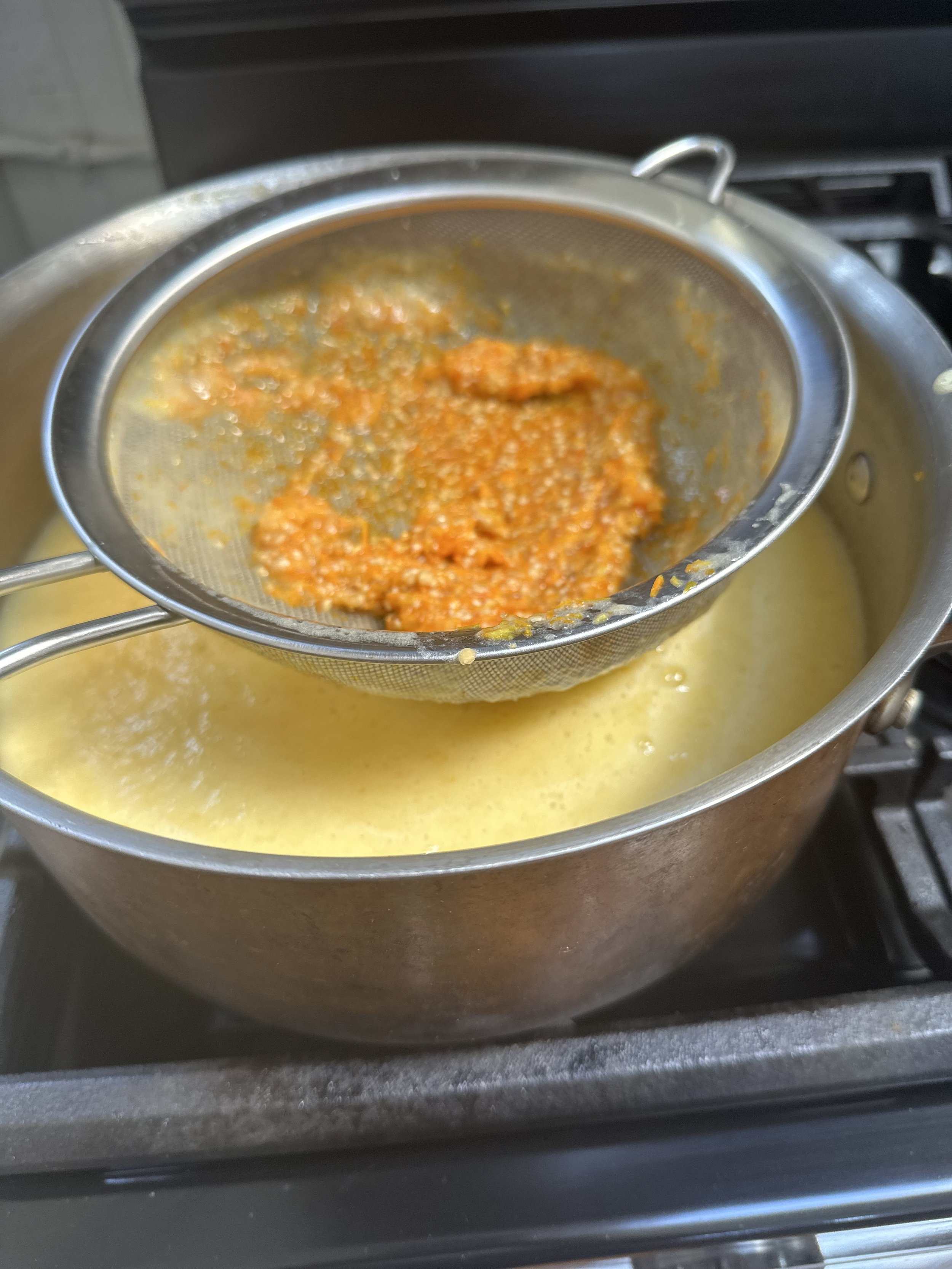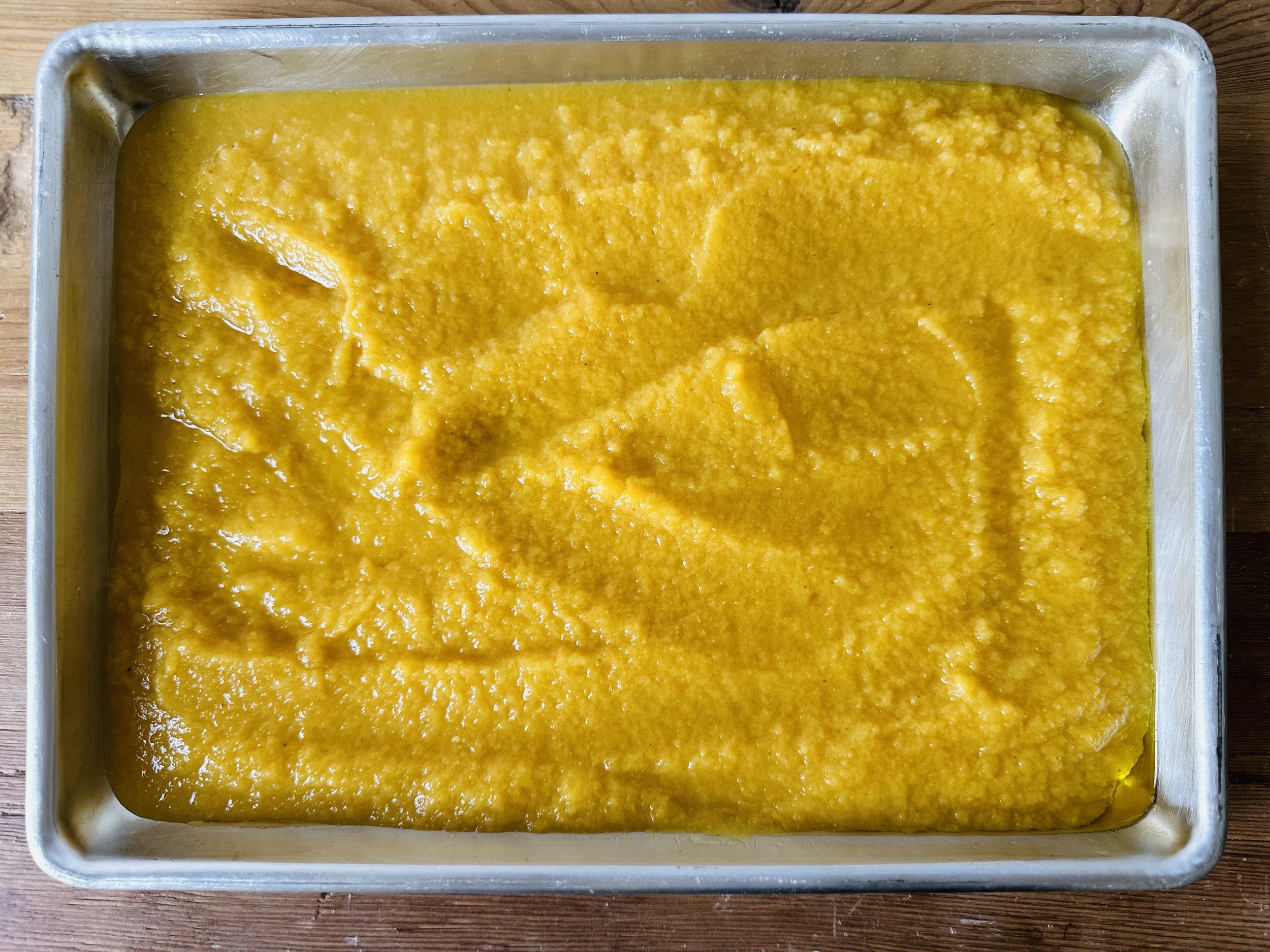Homemade Yellow Tomato Paste
Puree and strain yellow tomatoes before slowly cooking down to a concentrated paste.
Making homemade tomato paste is a rewarding and flavorful way to preserve the vibrant taste of summer. When you use locally grown, organic yellow Roma tomatoes, the results are even more delightful. The natural sweetness of yellow tomatoes, coupled with the slow, patient process of reducing and caramelizing the tomatoes, yields a rich, golden tomato paste perfect for enhancing sauces, soups, and more. Here’s a step-by-step guide to creating your own homemade tomato paste from scratch.
Why Yellow Roma Tomatoes?
Yellow Roma tomatoes are ideal for tomato paste because of their meaty texture, low water content, and natural sweetness. Unlike traditional red tomatoes, the yellow variety adds a more subtle, mellow flavor and beautiful color to dishes. Plus, using locally sourced organic tomatoes ensures the freshest, most vibrant flavors, free from pesticides or preservatives.
Ingredients:
5 pounds of local organic yellow Roma tomatoes
1 tablespoon Kosher salt
1-2 tablespoons of olive oil (optional)
Fresh herbs (such as basil or oregano, optional for flavoring)
Step 1: Preparing the Tomatoes
Start by thoroughly washing the yellow Roma tomatoes under cold water. Remove the stems and any blemishes, and then cut the tomatoes into halves or quarters. Place the tomatoes in a blender and puree until smooth. Pass through a fine sieve, pressing to remove all the pulp.
Step 2: Cooking the Tomatoes Down
Transfer the puree to a large pot or Dutch oven and sprinkle them with salt to help release their natural juices and enhance the flavor. Over medium heat, cook the tomatoes until they begin to soften and release their liquid—this should take about 20 to 30 minutes. Stir frequently to prevent sticking.
As the tomatoes simmer, they will turn into a thick puree. This step concentrates the natural sweetness and acidity of the tomatoes. If desired, you can add a touch of olive oil and herbs like basil or oregano to infuse the paste with subtle earthy notes.
Step 5: Roasting the Puree for Added Flavor
Once your puree has significantly reduced and thickened, preheat your oven to 250°F (120°C). Drizzle the baking sheet with 2 tablespoons of extra-virgin olive oil and spread the tomato puree in an even layer. Roast the puree in the oven for another 2-3 hours, stirring every 30 minutes to ensure even caramelization.
Roasting the tomato puree brings out deeper flavors, as the natural sugars in the tomatoes caramelize, adding a complex sweetness to the paste. You’ll know it’s ready when the puree has darkened slightly and taken on a jam-like consistency.
Step 6: Storing the Tomato Paste
Once your homemade tomato paste has finished roasting, let it cool completely. Transfer it into small glass jars, leaving a little room at the top for expansion if you plan to freeze it. Drizzle a thin layer of olive oil on top to help preserve it and keep it fresh.
Store your tomato paste in the refrigerator for up to two weeks, or freeze it for longer-term storage. For convenience, freeze the paste in small portions by spooning it into an ice cube tray. Once frozen, transfer the tomato paste cubes into a resealable freezer bag for easy access.
Uses for Homemade Tomato Paste
Tomato paste is a versatile ingredient that adds depth and richness to many dishes. Here are a few ways to use your homemade yellow Roma tomato paste:
Sauces: Add a spoonful of paste to tomato sauces, enhancing their flavor without overpowering the dish.
Soups and Stews: Stir in some tomato paste for added complexity and a touch of sweetness.
Pizza and Flatbreads: Use it as a base for homemade pizza or as a flavorful topping for flatbreads.
Marinades and Rubs: Blend the paste into marinades for roasted vegetables or meats.
Condiment: Spread a little paste on sandwiches or mixed into dips for a burst of flavor.
Creating homemade tomato paste from local organic yellow Roma tomatoes is a labor of love, but the end result is a deeply concentrated and caramelized paste that enhances countless dishes. The process of cooking down the tomatoes and roasting the reduction brings out the full potential of their natural sweetness. Whether you store it in the fridge or freeze it for later use, homemade tomato paste is a must-have staple for any kitchen, especially when made with the season’s freshest produce.


